she/her | homosexual | panromantic | cis i'm a lot of things, but mainly i'm a mess. "Disappearing is an art form and I am its queen." - Francesca Zappia, Eliza and Her Monsters
Don't wanna be here? Send us removal request.
Note
Hey Rachel! Would you mind telling us more about all the short stories you've written? Do you have a post that already does so? Hope you have a good week 💕
I haven��t updated on short fiction in a long time on here so this is the perfect occasion to get all the ducks in order! I’m not going to include my high school publications, but I’ll link them! Dandelion and The Light When You Close Your Eyes (page 71 for that one).
1. Sleight of Hand | writing update
This is an old story I wrote for my grade twelve writing class, but was essentially my first short story. This story is about two sisters who get wrapped up in a murder on Christmas Eve. Never was really interested in polishing it so it’s just chillin on my computer lol. Word count: 1915 words.
2. NYC in Your Apartment | writing update
I wrote this story later that year, and was a story I was really proud of! It’s my only story that ends happily lol so in a way, it doesn’t really jive with my other work (no murder?? blasphemy). Word count: 5414 words.
Here’s a blurb from the writing update:
Joanne, a 20-year-old college dropout, insists she’s making bad decisions because a poltergeist is possessing her. Despite not being religious, she spends her Sundays at a cathedral as a means to re-centre herself. Told in second person, Joanne distantly navigates her life, these choices, and past traumas in order to reconnect with herself + those around her.
Structurally this story might work as a longer work (maybe a novella), but if I revise the latter half which gets a little rushed, I do think I’d consider sending it out to some magazines! It’s kind of a pure story lol.
3. Water Burials for the Living
I wrote this story last year and have promptly forgotten about it lol.
Three young neighbours, Izso, Louis, and Dahlia as they head to a lake to try to contact the ghost of a boy rumoured to haunt it.
Fun fact though, this story got so spooky, I scared myself. Word count: 3843 words.
4. How Long it Takes to Drown
This was written for my intro uni writing class and was a flash fiction piece of 500 words. We were given a photo prompt to turn into a story.
A young girl named Tulip plays a water game with homicidal older boy Rocky and glitzy neighbour Joanna.
I’m happy with this turned out, especially since it was so challenging to write in such a small space! I don’t think I’ll submit it anywhere, so maybe I’ll post it on here sometime?
5. The Species is Dead
I wrote this as my final assignment for my fiction unit and it was recently published in Minola Review. I had a lot of fun planning this story and was really surprised by the positive response it got from my TAs and profs. The story stemmed from the fact that my family had replaced our very old refrigerator and put the old one into the basement, and my brother said something about having an “auxiliary fridge”. After he said that I promptly got the idea for the first line which is actually the same first line in the published story. Originally Janice was supposed to be the narrator’s sister and then she turned into an invasive species as I smashed the fridge idea with a title I’d been longing to use that I’d jotted down, The Species is Dead. Word count: 1208 words.
A small town turns murderous when their local invasive species—the Janices—begin dying.
6. Primary Organs
I haven’t talked about this story at all on my blog, but it’s probably my favourite piece of writing I’ve ever written. I wrote this in March I believe! It started because I wanted to write a flash fiction piece for a contest I saw. The first thing that popped into my head was a line about a mother leaving their lungs on the porch (literally lol tho this went metaphorical quite quickly). I ran with that, and this story sort of... appeared. Word count: 2342 words.
Six-year-old Eileen watches the body of her dead mother from the driveway of her neighbour’s house.
I’d love for this story to get published! Been sending out good vibes!
27 notes
·
View notes
Text
Underwatched Animated Films I Recommend You See at Least Once in Your Life
EDIT: i didn’t expect this post to get so many notes. for the record, these are just my personal recommendations, not a definitive list of best underrated animation. i also did not include anything made by Disney. I know that they made some movies that didn’t get as much attention as their other hits, but lists of underwatched Disney films are pretty common, so I thought I’d make one of films by studios that aren’t household names.
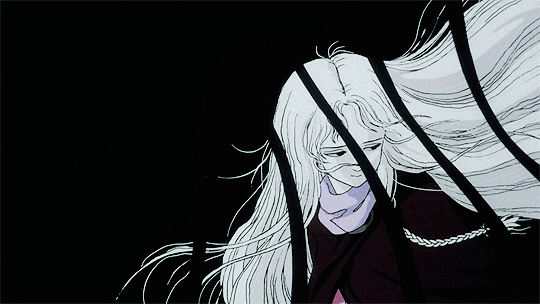
Angel’s Egg (1985)
This movie is a nearly silent film with painstakingly beautiful frames and environmental details. All I can say is that it is a real piece of art worth watching and can be watched on YouTube here.

Les Triplets de Belleville (The Triplets of Belleville) (2005)
An incredibly quirky, strange and humorous French film, also with almost no dialogue. The colors, creative storytelling, and almost caricature-like designs make the Triplets a must-see. The setting and timeframe is left sort of abstract, but it’s a clear transition from last-century rural France to the hustle and bustle of urban America. Lots of homage is paid to cartoons from the 1920s.
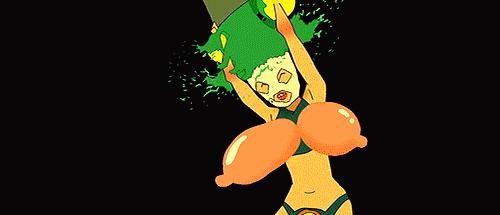
Mindgame (2004)
This movie, quite like the title says, blew my mind. It’s also incredibly strange and out-there, but the awkward imagery gives way to real emotion and huge payoff by the end. The colors and animation are delightful, and always tailored to the situation. It is an amazing intersection of an altered state, a love story, a struggle to get home, an existential trip, and an unlikely group of friends. I almost always cry when I watch this. Seriously, can’t stress this enough. There is absolutely nothing like Mindgame.
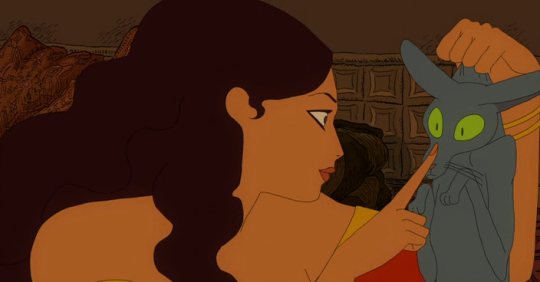
Le Chat du Rabbin (The Rabbi’s Cat) (2011)
Rabbi’s Cat is a French film based on a French comic by the same name. The comic artist also directed the movie. Honestly, the dialogue in this is unmatched. Both Cat and Rabbi are witty and have the best banter. The setting is one of the most unique and real-feeling I’ve ever seen a film take place in: a Jewish community in Algeria. It’s wonderful and incredibly charming, could not recommend more.

Tekkonkinkreet (2006)
This movie hits me on a number of levels. I have so much love for the two orphans, Black and White. The story quickly becomes raw and almost difficult, as it touches on a lot of the feelings we see in things like Grave of the Fireflies, but in a much more abstract way and on a much grander scale. Also less sad, but there are very sad parts also. I guess the best way to describe this movie is intense. While there are a lot of sweet, domestic moments, none of the gruesome reality is sugercoated for you.
The visuals are all completely stunning; the art is on another level. Treasure Town is a rich, fantastical environment and the characters flow through it effortlessly, like water. You gotta see this at least once in your life.
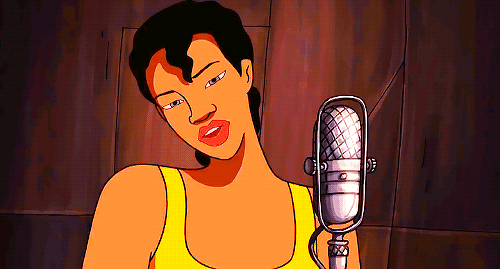
Chico and Rita (2010)
An American/Spanish romance between an aspiring piano player and a young singer. The film opens in Cuba and has a vibrant and unique visual style while exploring a multitude of music styles and cultural backdrops. It’s touching and sweet, but does not erase the hardships of being a black music star in America or living through the Castro regime.
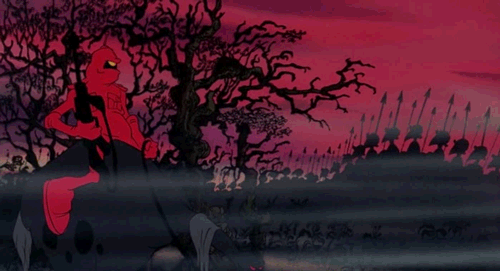
Wizards (1977)
Ralph Bakshi is notorious for underappreciated gems. Wizards is set in a post-apocalyptic fantasy world where magic is real and man has survived the radiation to evolve into fairies, elves, and dwarves. It’s a classic nature vs industry story with Bakshi’s unique spin. My favorite character is Necron 99, the assassin robot turned pacifist. I’ll warn you though, Bakshi films aren’t everyone’s taste (he’s responsible for Fritz the Cat, which against my better judgement I recommend as well).
Wizards was completed during the dark age of animation, and its fascinating to see how Bakshi gets around these limitations to produce something that grossed more than twice its budget.
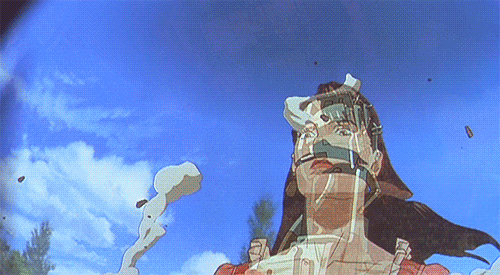
Memories (1995)
Memories is a three part anthology based on three different manga short stories, Magnetic Rose, Stink Bomb, and Cannon Fodder. While the entirety of the movie is beautifully animated and worth the watch, the best of these is the first one. It is a mysterious, tragic sci-fi horror short film set in space and worked on by Satoshi Kon (so of course its amazing).
88K notes
·
View notes
Photo

Sunburst and the King by MV Alzakhm Related Works: The Vizier’s Apprentice
NOTE: This is the first in a series of blackout poetry. Join the tag list here. Transcript and source text below the cut.
Keep reading
202 notes
·
View notes
Text
the hunter and the beast —
now has a wip page where everything related to it is linked. i will make an in-detail character page + world page soon.
quick updates:
considering title change to the beast hunter
chapter two is on its way with a new folkloric creature and more information on the world of huntsmen (along with some deep foreshadowing)
post will be made on the new folkloric creature(s) present in ch.2
Keep reading
22 notes
·
View notes
Text
Writing Prompt: Dialogue
“[—-], [—-] and [—-].” “[—-]’s kinda the odd brother out. Check out the muscles on him.” “What a bruiser.” “Think [—-] sprinkled some ‘roids on his cornflakes.” “Definitely didn’t skip neck day at the gym. Guy’s an absolute unit.”
22 notes
·
View notes
Text
I want to cuddle with a girl in a blanket fort lit with fairy lights
878 notes
·
View notes
Text
Dear Chloe,
I’ve been feeling like my life is getting away from me. I feel like I’m out of control. The idea of it seems so out of place right now, like it didn't really occur to me. I'm scared and tired. I feel like everything around me is moving too fast and it's hard to figure out where to go next. I think I’m lost, Chloe. Please.
Sarah
0 notes
Video
tumblr
look I’ve had a really shitty day and ngl I’ve just rewatched this video SEVERAL times in a row for catharsis reasons

71K notes
·
View notes
Text
Dear Chloe,
Please come back.
I miss you more than I can even explain.
I love you, Chloe,
Sarah
0 notes
Photo




house of pythia: calliope.
calliope waves her hand dismissively. “you are nothing, until you can find someone who can wield the power of that marble. and even then, you will only be the one who delivered the marble to a soon-to-be hero.”
“it’s not just a marble,” jack protests, sounding so offended that peter has to cover his mouth to stop himself from laughing. “it’s the spirit of the oracle of delphi.”
“same thing.” calliope shrugs. “in your hands, it is no better than a pebble.”
Keep reading
107 notes
·
View notes
Note
I wanted to write an indulgent story, where most of the characters were strong women. But as I was planning out a story, (a fantasy one where only women have magic) I realized that what a white woman wants to see in a strong woman might be different from anyone else, but I have no idea how to research that. Do you have any advice? (Sorry if this is worded awful! I hope you understand but it’s alright if you don’t.)
Writing Powerful Women of All Races
It’s great that you recognize that women’s representation is not one size fits all. What makes for good representation for white women is not the same for Women of Color.
Let’s consider how society handles women across the board:
White Women:
Traditionally, white women are treated as delicate beings, meant to be protected and romanced by men. White women are the standard of femininity and beauty. Women of Color can be attractive, too, but in a “different” way. Most positive roles for white women depict them breaking from these definitions, either embracing sexual labels or evading them by throwing out the need to be dolled-up, gentle, or in a relationship.
Even these problems come with privilege as there is this need to “dirty” oneself up and prove physical and emotional strength.
Anger in white women is seen as powerful. Anger in non-white women is either sexualized (see: the Spicy Latina) or seen as hostility and bitterness typical of their race (see: the Angry Black Woman).
White women embracing sexuality and the “Slut” role is groundbreaking. That doesn’t always translate well for WoC who are inherently seen as overly sexual and impure, and have the highest rates of sexual assault to show for it.
Black Women:
Black women are most often placed into the role of strong and independent, with an emotional and physical hardness that resists love and tenderness. They don’t need support, but they’ll be more than willing to use their backs to uplift others, no matter the gender, all and any races. Black women are rarely portrayed with classical softness or femininity. Note how Black women are so hard and impenetrable…except when it comes to helping everyone but themselves. Then they are your Mammy, warm and lovable and always there to support you, despite how much self-care they must neglect.
Asian Women:
Comparably, Asian women, especially East Asian women but other Asian women are affected too, are placed in juxtaposition to Black women. Asian women are fragile and need shielding, but that comes with a sinister dose of fetishization. They are often viewed as submissive, and are given gross comparisons to dolls as if items to place on display and control. They’re desirable, but in an “exotifc” way, and of course are not seen to have the same worth as white women.
This is often depicted in works, both old and modern: The white man falls in love with the Asian woman. After he’s had his fun, he abandons her to settle down with a white woman. The Asian woman ends her life as it is worth nothing without him.
On the flip side: Asian women are fragile and worth protecting…except when they’re not. The Dragon Lady stereotype features Asian women (Mainly East Asian) who manipulate and dominate others. This stereotype is often depicted by them dominating white men for Yellow Peril ends.
Native women:
Native women are seen as simple and animalistic, their “simpler” culture relating to “primal” needs. The narrative starts with Pocahontas, a scantily clad Disney princess who shows a white settler the wonders of the “natural” world, and continues all throughout Halloween costumes, Noble Savage, and Animalistic Natives. This very exact fetishization makes them prime targets for toxic masculinity’s view that women actively desire the more “beastly”/forcible sex, basically assuming Native women will behave like animals in heat— because that’s what society believes Natives are: a type of animal.
Women of Color:
Although this is grouping a number of women into one, they share a common thread of being exotified and fetishized. From the Spicy Latina to the brown-skinned temptress. They’re fun and sexy, and on the same hand promiscuous and impure. WoC are often portrayed as mistresses and homewreckers.
Women of Color are treated as Other, and are rarely the default. Notice in media that there’s a reluctance to call Women of Color beautiful. Words like “Striking” “Stunning” and “Exotic” are often used in its place, with an overemphasis on certain features more common to the ethnicity. And when they are more certainly called attractive, you’ll often find qualifiers such as the Dark Beauty or “Pretty for a Black Girl.”
While there is a lot of desexualizing in association with Black women (e.g. mammy), there’s another side where a Black woman’s body (see: curves and full lips) are inherently sexual to the point where even teenagers are labeled as “ho’s” and “Thots” who seek to tempt men for simply wearing shorts.
It’s no wonder Women of Color are assaulted at the highest numbers. Native American women lead in those statistics, and are at risk for sexual assault at twice the rate of others. For more stats, follow the link: (X)
A shared thread between all of these Women of Color is that, more often than not, people will not be content with these women being anything but their expected stereotypes. Also, there’s often a grumble by racist audiences when WoC are presented in relationships outside of their own race, particularly if they go anywhere near beloved white characters.
It’s time to break free of limited, dated molds and make society uncomfortable.
How do I respectfully represent these women?
I love your story concept, with all of these women having powers. Just keep in mind: what will work as positive representation for your white women may not work for Women of Color. We all have different histories that inform the struggles we have in society and what counts as proper representation.
Develop characters without applying what works for white women to all women. That is White Feminism. Intersectional feminism exists to consider Women of Color + other marginalizations and their needs as well.
Create customized representation that uplifts each woman.
Develop personalities that don’t play into stereotypes. Choose powers that reflect individuality for each woman, not what is assumed about Black women, Mexican women, etc. What we hear and see in media informs our creative thought process, so your first idea may not be the most fitting one. Brainstorm! As a starting point, do opposite of the stereotypes and go from there. At the same time, find a balance to avoid extremes.
For example, the fragile Asian woman’s opposing extreme is Dragon Lady. The Strong Black Woman’s opposing extreme leads to infantilization aka making her utterly helpless.
And even then! Consider that sometimes people do have traits that may seem stereotypical. If that’s the case, it’s your job as the author to show that there’s more to them. They are human and not a label.
You can be physically strong, and still bubble with kindness, emotional softness and femininity.
Pink nail polish does not weaken a punch, or define someone as too girly or weak. It means you like pink.
You can show emotional vulnerability, fall in love and be loved in return, and still remain powerful and whole without becoming the Strong Black Women.
You can be gentle and worthy of protection while having self-worth and confidence.
You can be sensual and desirable without becoming an exotic commodity, but instead someone who is more than sexual, is in control, and 100% deserving of respect.
You can also just not be sexual, but that shouldn’t mean void of love to give and receive in return.
More reading: Stereotyped vs Nuanced Characters and Audience Perception
Research
There’s many places for you to start your research, and tons of it has been written right here on this page as well as all across the web in articles, blogs, vlogs, books etc. Seek topics on representation and intersectional feminism for the races you wish to portray. The best sources are written by the same people you’re reading about. Check out our Stereotypes & Tropes Navigation and the TVTropes List so you can recognize the displeasing ways WoC have been represented so you can avoid or amend it, and showcase people the way they want to be represented.
I also recommend you check out POC Profiles for the types of representation people who have submitted here are asking for. The WWC mods have also written on the topic in the Mod Wishlist post.
–WWC
12K notes
·
View notes
Text
I made some depressing “growing up autistic” memes
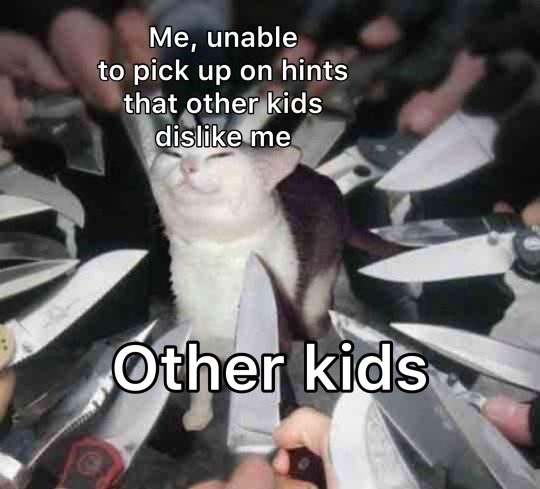
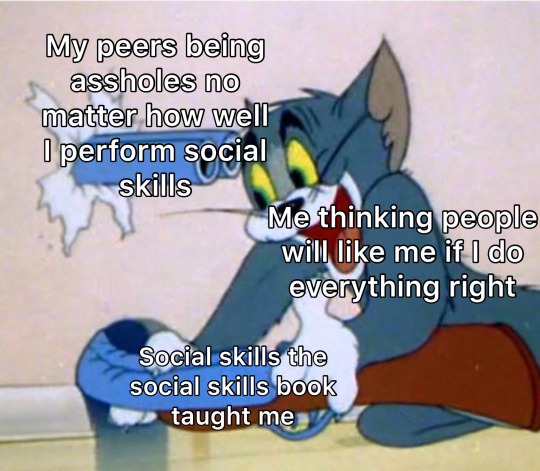
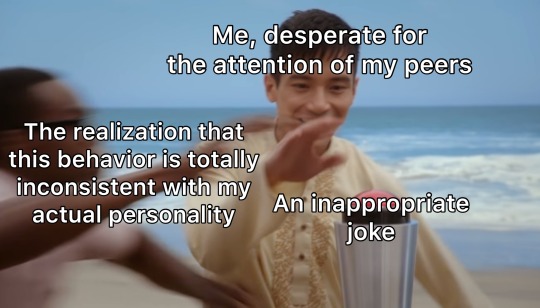
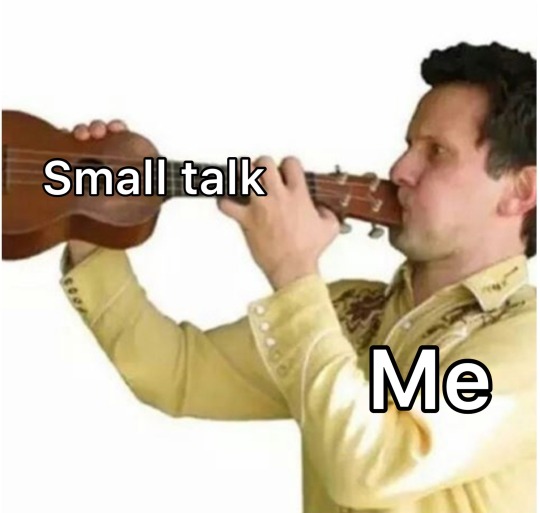
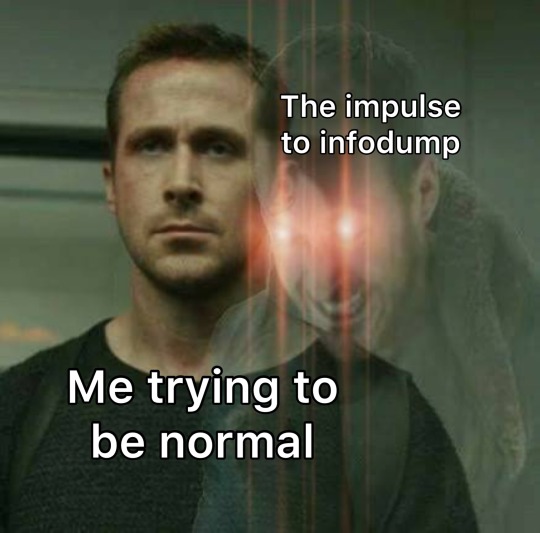
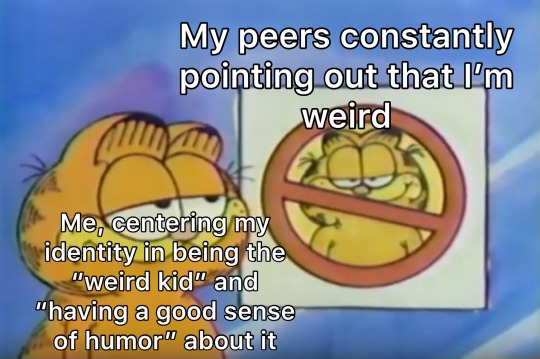
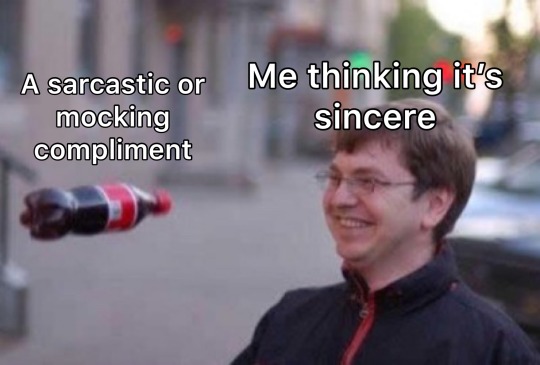
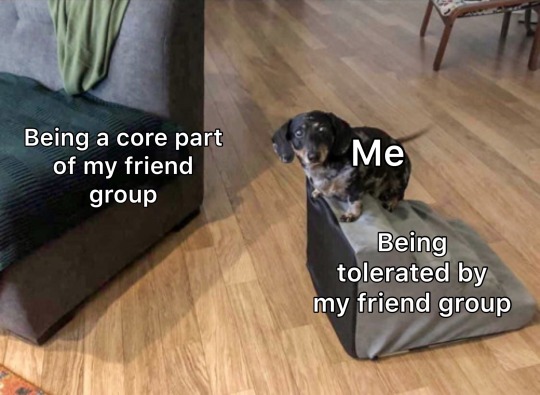
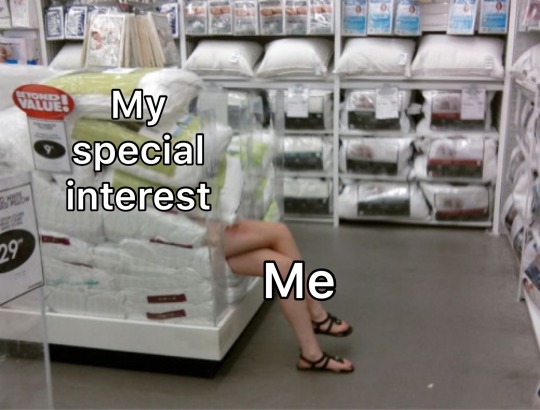
And yeah this is for the adhd peeps too
92K notes
·
View notes
Photo


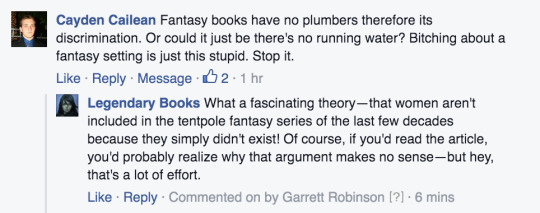

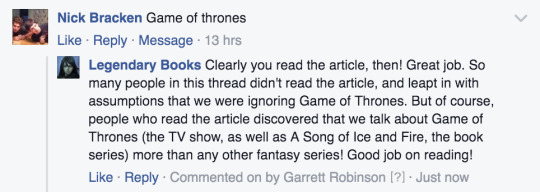
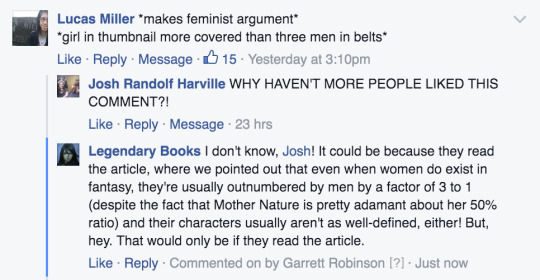
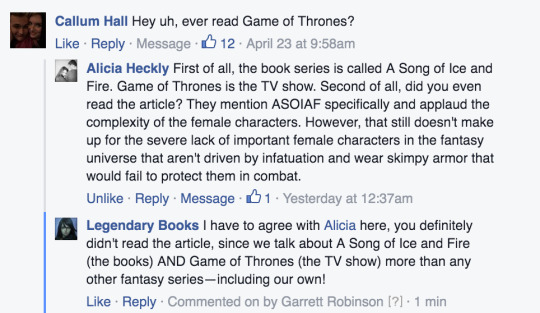
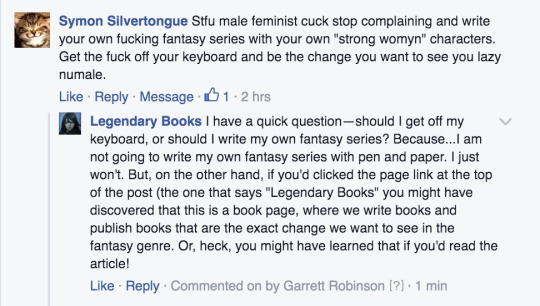
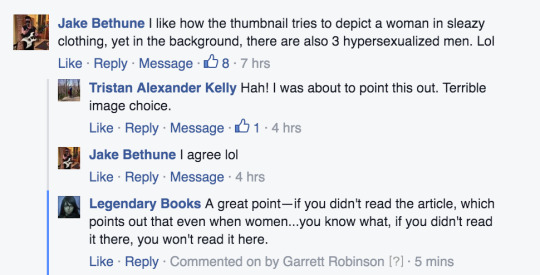
I got real petty over on the Facebook page and IT WAS GLORIOUS.
320K notes
·
View notes
Audio
“Old Town Road” with every other beat removed
97K notes
·
View notes
Text
Reblog this and put in the tags "I am" and put the first tag that pops up for it.
14K notes
·
View notes
Text
Dear Chloe,
You're my whole world. I miss you so much every day. It's torture to have to go through this now that you have another chance at life and hope. At least, I hope. Please, please contact me. We just want to make sure you’re safe.
Sarah
0 notes
Text

Writing with Color: Description Guide - Words for Skin Tone
We discussed the issues describing People of Color by means of food in Part I of this guide, which brought rise to even more questions, mostly along the lines of “So, if food’s not an option, what can I use?” Well, I was just getting to that!
This final portion focuses on describing skin tone, with photo and passage examples provided throughout. I hope to cover everything from the use of straight-forward description to the more creatively-inclined, keeping in mind the questions we’ve received on this topic.
So let’s get to it.
S T A N D A R D D E S C R I P T I O N
B a s i c C o l o r s

Pictured above: Black, Brown, Beige, White, Pink.
“She had brown skin.”
This is a perfectly fine description that, while not providing the most detail, works well and will never become cliché.
Describing characters’ skin as simply brown or beige works on its own, though it’s not particularly telling just from the range in brown alone.
C o m p l e x C o l o r s
These are more rarely used words that actually “mean” their color. Some of these have multiple meanings, so you’ll want to look into those to determine what other associations a word might have.

Pictured above: Umber, Sepia, Ochre, Russet, Terra-cotta, Gold, Tawny, Taupe, Khaki, Fawn.
Complex colors work well alone, though often pair well with a basic color in regards to narrowing down shade/tone.
For example: Golden brown, russet brown, tawny beige…
As some of these are on the ��rare” side, sliding in a definition of the word within the sentence itself may help readers who are unfamiliar with the term visualize the color without seeking a dictionary.
“He was tall and slim, his skin a russet, reddish-brown.”
Comparisons to familiar colors or visuals are also helpful:
“His skin was an ochre color, much like the mellow-brown light that bathed the forest.”
M o d i f i e r s
Modifiers, often adjectives, make partial changes to a word.The following words are descriptors in reference to skin tone.
D a r k - D e e p - R i c h - C o o l
W a r m - M e d i u m - T a n
F a i r - L i g h t - P a l e
Rich Black, Dark brown, Warm beige, Pale pink…
If you’re looking to get more specific than “brown,” modifiers narrow down shade further.
Keep in mind that these modifiers are not exactly colors.
As an already brown-skinned person, I get tan from a lot of sun and resultingly become a darker, deeper brown. I turn a pale, more yellow-brown in the winter.
While best used in combination with a color, I suppose words like “tan” “fair” and “light” do work alone; just note that tan is less likely to be taken for “naturally tan” and much more likely a tanned White person.
Calling someone “dark” as description on its own is offensive to some and also ambiguous. (See: Describing Skin as Dark)
U n d e r t o n e s
Undertones are the colors beneath the skin, seeing as skin isn’t just one even color but has more subdued tones within the dominating palette.

Mentioning the undertones within a character’s skin is an even more precise way to denote skin tone.
As shown, there’s a difference between say, brown skin with warm orange-red undertones (Kelly Rowland) and brown skin with cool, jewel undertones (Rutina Wesley).
“A dazzling smile revealed the bronze glow at her cheeks.”
“He always looked as if he’d ran a mile, a constant tinge of pink under his tawny skin.”
Standard Description Passage
“Farah’s skin, always fawn, had burned and freckled under the summer’s sun. Even at the cusp of autumn, an uneven tan clung to her skin like burrs. So unlike the smooth, red-brown ochre of her mother, which the sun had richened to a blessing.”
-From my story “Where Summer Ends” featured in Strange Little Girls
Here the state of skin also gives insight on character.
Note my use of “fawn” in regards to multiple meaning and association. While fawn is a color, it’s also a small, timid deer, which describes this very traumatized character of mine perfectly.
Though I use standard descriptions of skin tone more in my writing, at the same time I’m no stranger to creative descriptions, and do enjoy the occasional artsy detail of a character.
C R E A T I V E D E S C R I P T I O N
Whether compared to night-cast rivers or day’s first light…I actually enjoy seeing Characters of Colors dressed in artful detail.
I’ve read loads of descriptions in my day of white characters and their “smooth rose-tinged ivory skin”, while the PoC, if there, are reduced to something from a candy bowl or a Starbucks drink, so to actually read of PoC described in lavish detail can be somewhat of a treat.
Still, be mindful when you get creative with your character descriptions. Too many frills can become purple-prose-like, so do what feels right for your writing when and where. Not every character or scene warrants a creative description, either. Especially if they’re not even a secondary character.
Using a combination of color descriptions from standard to creative is probably a better method than straight creative. But again, do what’s good for your tale.
N A T U R AL S E T T I N G S - S K Y

Pictured above: Harvest Moon -Twilight, Fall/Autumn Leaves, Clay, Desert/Sahara, Sunlight - Sunrise - Sunset - Afterglow - Dawn- Day- Daybreak, Field - Prairie - Wheat, Mountain/Cliff, Beach/Sand/Straw/Hay.
Now before you run off to compare your heroine’s skin to the harvest moon or a cliff side, think about the associations to your words.
When I think cliff, I think of jagged, perilous, rough. I hear sand and picture grainy, yet smooth. Calm. mellow.
So consider your character and what you see fit to compare them to.
Also consider whose perspective you’re describing them from. Someone describing a person they revere or admire may have a more pleasant, loftier description than someone who can’t stand the person.
“Her face was like the fire-gold glow of dawn, lifting my gaze, drawing me in.”
“She had a sandy complexion, smooth and tawny.”
Even creative descriptions tend to draw help from your standard words.
F L O W E R S
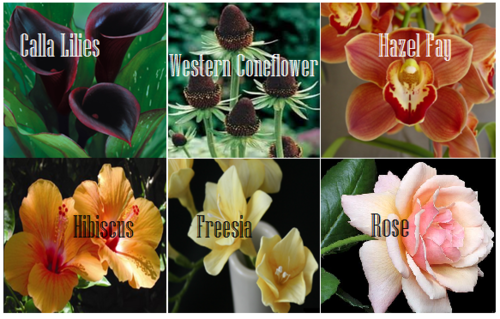
Pictured above: Calla lilies, Western Coneflower, Hazel Fay, Hibiscus, Freesia, Rose
It was a bit difficult to find flowers to my liking that didn’t have a 20 character name or wasn’t called something like “chocolate silk” so these are the finalists.
You’ll definitely want to avoid purple-prose here.
Also be aware of flowers that most might’ve never heard of. Roses are easy, as most know the look and coloring(s) of this plant. But Western coneflowers? Calla lilies? Maybe not so much.
“He entered the cottage in a huff, cheeks a blushing brown like the flowers Nana planted right under my window. Hazel Fay she called them, was it?”
A S S O R T E D P L A N T S & N A T U R E

Pictured above: Cattails, Seashell, Driftwood, Pinecone, Acorn, Amber
These ones are kinda odd. Perhaps because I’ve never seen these in comparison to skin tone, With the exception of amber.
At least they’re common enough that most may have an idea what you’re talking about at the mention of “pinecone.“
I suggest reading out your sentences aloud to get a better feel of how it’ll sounds.
"Auburn hair swept past pointed ears, set around a face like an acorn both in shape and shade.”
I pictured some tree-dwelling being or person from a fantasy world in this example, which makes the comparison more appropriate.
I don’t suggest using a comparison just “cuz you can” but actually being thoughtful about what you’re comparing your character to and how it applies to your character and/or setting.
W O O D

Pictured above: Mahogany, Walnut, Chestnut, Golden Oak, Ash
Wood can be an iffy description for skin tone. Not only due to several of them having “foody” terminology within their names, but again, associations.
Some people would prefer not to compare/be compared to wood at all, so get opinions, try it aloud, and make sure it’s appropriate to the character if you do use it.
“The old warlock’s skin was a deep shade of mahogany, his stare serious and firm as it held mine.”
M E T A L S

Pictured above: Platinum, Copper, Brass, Gold, Bronze
Copper skin, brass-colored skin, golden skin…
I’ve even heard variations of these used before by comparison to an object of the same properties/coloring, such as penny for copper.
These also work well with modifiers.
“The dress of fine white silks popped against the deep bronze of her skin.”
G E M S T O N E S - M I N E R A LS

Pictured above: Onyx, Obsidian, Sard, Topaz, Carnelian, Smoky Quartz, Rutile, Pyrite, Citrine, Gypsum
These are trickier to use. As with some complex colors, the writer will have to get us to understand what most of these look like.
If you use these, or any more rare description, consider if it actually “fits” the book or scene.
Even if you’re able to get us to picture what “rutile” looks like, why are you using this description as opposed to something else? Have that answer for yourself.
“His skin reminded her of the topaz ring her father wore at his finger, a gleaming stone of brown, mellow facades.”
P H Y S I C A L D E S C R I P T I ON
Physical character description can be more than skin tone.
Show us hair, eyes, noses, mouth, hands…body posture, body shape, skin texture… though not necessarily all of those nor at once.
Describing features also helps indicate race, especially if your character has some traits common within the race they are, such as afro hair to a Black character.
How comprehensive you decide to get is up to you. I wouldn’t overdo it and get specific to every mole and birthmark. Noting defining characteristics is good, though, like slightly spaced front teeth, curls that stay flopping in their face, hands freckled with sunspots…
G E N E R A L T I P S
Indicate Race Early: I suggest indicators of race be made at the earliest convenience within the writing, with more hints threaded throughout here and there.
Get Creative On Your Own: Obviously, I couldn’t cover every proper color or comparison in which has been “approved” to use for your characters’ skin color, so it’s up to you to use discretion when seeking other ways and shades to describe skin tone.
Skin Color May Not Be Enough: Describing skin tone isn’t always enough to indicate someone’s ethnicity. As timeless cases with readers equating brown to “dark white” or something, more indicators of race may be needed.
Describe White characters and PoC Alike: You should describe the race and/or skin tone of your white characters just as you do your Characters of Color. If you don’t, you risk implying that White is the default human being and PoC are the “Other”).
PSA: Don’t use “Colored.” Based on some asks we’ve received using this word, I’d like to say that unless you or your character is a racist grandmama from the 1960s, do not call People of Color “colored” please.
Not Sure Where to Start? You really can’t go wrong using basic colors for your skin descriptions. It’s actually what many people prefer and works best for most writing. Personally, I tend to describe my characters using a combo of basic colors + modifiers, with mentions of undertones at times. I do like to veer into more creative descriptions on occasion.
Want some alternatives to “skin” or “skin color”? Try: Appearance, blend, blush, cast, coloring, complexion, flush, glow, hue, overtone, palette, pigmentation, rinse, shade, sheen, spectrum, tinge, tint, tone, undertone, value, wash.
Skin Tone Resources
List of Color Names
The Color Thesaurus
Things that are Brown (blog)
Skin Undertone & Color Matching
Tips and Words on Describing Skin
Photos: Undertones Described (Modifiers included)
Online Thesaurus (try colors, such as “red” & “brown”)
Don’t Call me Pastries: Creative Skin Tones w/ pics 3 2 1
Writing & Description Guides
WWC Featured Description Posts
WWC Guide: Words to Describe Hair
Writing with Color: Description & Skin Color Tags
7 Offensive Mistakes Well-intentioned Writers Make
I tried to be as comprehensive as possible with this guide, but if you have a question regarding describing skin color that hasn’t been answered within part I or II of this guide, or have more questions after reading this post, feel free to ask!
~ Mod Colette
170K notes
·
View notes